Text
How to Tell Stories that Connect in 140 Characters
Stories exist on a continuum.
They aren't necessarily thick books, hour-long documentaries, or lengthy speeches. An effective story does not have to take up immense amounts of time, space, or place.
Brand tag lines, mission statements, and tweets can be stories in and of themselves.
However, the investment required in telling shorter stories that resonate often outweighs the story itself. Often, it takes more skill, creativity, and effort to tell a short story that connects than it does to tell a lengthier version.
Two tall hurdles exist when attempting to conceive and construct shorter stories that connect:
Emotion
Ego
Both must be overcome quickly if a shorter story is to be effective and distributed efficiently.
First, it's emotionally difficult to part with words, lines, and metaphors we've identified as integral to the story we want to tell. But shorter stories demand we eliminate or cut some of these. The emotional attachments doers have to their creations are barriers to whittling larger stories into shorter ones. However, shorter stories demand we build them without some of the creations of which we are proud.
Second, egos often impede the creation of effective shorter stories. Larger egos tend to migrate toward larger stories. Heftier egos routinely mistake more for better. Overcoming the propensity larger egos have to fill larger amounts of time and space is a prerequisite in telling effective shorter stories.
Clearing both these hurdles without tripping becomes much easier when you are:
Story centric vs. selfish
Audience focused vs. selfish
Outcome fixated vs. selfish
Only after the process is void of emotion and ego can an individual or organization begin the hard work of combining science with creativity to generate shorter stories that make a difference.
The 4 Is are the objectives important in effective short storytelling. The objectives is to create:
Intrigue- tear recipients from what they're doing
Instruct- create intellectual discomfort so recipients will learn more
Invigorate- cause recipient to invest emotionally in your story
Insist- persuade or prompt a desired outcome
Objectives must be paired with an appropriate tool to create short stories that stand out. Appropriate tools for each objective include but are not limited to:
Intrigue- Irregularity
Instruct- Violate Expectations
Invigorate- Universal Emotion
Insist- Compliance Tactic
Shorter stories disguise themselves as simple. Their brevity doesn't do justice to the time investment often required of their creation. However, well told shorter stories open the door for further engagement.
Shorter stories may not persuade recipients to do what you ultimately want them to do. But they are precursors in persuading people to sample longer-form stories that might.
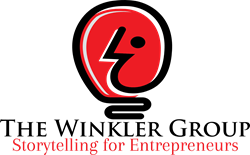
Ready to market smarter?
Get Instant Access to our Storytelling Library
0 notes
Text
What You Can Learn From the Billionaires I Know
I don't know any of the billionaires pictured.
And they certainly don't know me.

But I am fortunate in that I routinely crossed the paths of three other billionaires when I worked as an investigative television news reporter.
One made his money in the oil patch
Another made his money in media
And the third in real estate and professional sports
Rather than drop their names I thought it'd be more valuable to see what they dropped in terms of hints we can use to grow & stand out like they do. Interestingly, the billionaires I know have much in common.
Ten Reasons Billionaires Succeed & How You Can Too
Rule Reset- The billionaires I know are rule creators rather than rule followers. Rules favor those who make them not those who must follow them. When you create the rules others must follow you create a competitive advantage for yourself. You tilt the balance in your favor and are able to move faster than competitors.
Create Scarcity- The billionaires I know use scarcity to create value. They identify ways to benefit from scarcity even if they compete in crowded fields or where resources or assets are plentiful. If scarcity isn't present naturally, the billionaires I know create it. Billionaires create scarcity through processes, methods, or rigorous analysis.
Proprietary- The billionaires I know, often as a result of the scarcity they create, possess a proprietary asset. The system, process, or rigor used to create scarcity is not easily replicated and provides differentiation and a competitive advantage.
Scalable- The billionaires I know distance themselves from multimillionaires by scaling the proprietary asset they possess. They scale in a variety of ways that include licensing proprietary assets, using proprietary assets to create additional scarcity, & buying & selling in a unique or unorthodox manner.
Additional Services- The billionaires I know offer a core product or service that creates demand for additional or bolt-on products or services. Little or no upselling, cross selling, or additional marketing is required. The demand is embedded in the core offering.
Harder & Smarter- The billionaires I know work harder and smarter. Conventional wisdom often advises one or the other is sufficient. Adhering to both is often how billionaires are able to scale larger and more quickly.
Honest Self-Assessment- The billionaires I know honestly assess & identify their weaknesses, blind spots, & shortcomings. They surround themselves with talent to plug those gaps and excel despite them.
Tenaciously Persistent- The billionaires I know are stubbornly dogged in pursuit of their objectives.
Exceptionally Generous- The billionaires I know are benevolent with their wealth, time, and resources. More importantly, they were this way prior to becoming billionaires.
Authentic Storytellers- The billionaires I know are convincing because they understand how to tell a compelling story. They don't persuade with facts. They change how people feel before they change how people behave.
One last billion dollar thought...
While I always got a kick out of billionaires picking fights with one another publicly (they also enjoy writing one another letters privately), I also keep close this piece of advice from the smartest billionaire I know:
"You can never have too many rich friends!"
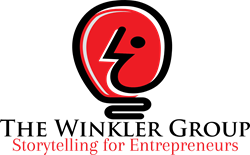
Ready to market smarter?
Get Instant Access to our Storytelling Library
2 notes
·
View notes
Text
How You Can Talk Seth Godin Out of $74,980.01 Just Like I Did
I just got Seth Godin to reduce his normal speaking fee by $74,980.01.
It was me and Seth live for 45 minutes!

While it may look like I got a great deal ($74.9k) Godin actually got the better end of it by generating $25k more than he normally would for a speaking engagement.
Confused?
First, some disclosures...
The $75k speaking fee I use as a basis is a conservative estimate based on information gleaned from people familiar with what Godin was paid to speak to Ford recently.
I wasn't the only person listening to Godin's 45 minute live interactive as part of a course he offers on Skillshare.
I paid $19.99 to take the class with 5,000 others, a crowdfunding goal which resulted in the live Godin chat
There's a lesson here, even for entrepreneurs who lack Godin's name recognition.
Godin's Skillshare class is working at the intersection of crowdfunding & education.
CROWDFUNDING + EDUCATION = VALUE FOR ALL
Godin leveraged his popularity to make education affordable to thousands of people who otherwise could not afford to pay him for a keynote speech. Keep in mind I'm ignoring the value created by the actual course itself.
By creating value for the 5,000 people who initially signed up for the class Godin also created more value for himself than a routine keynote would.
How?
The class itself has generated roughly $100,000, which is 33% more than a Godin keynote. Expect these numbers to increase as more people sign up and the price of the class doubles.
Godin increased the revenue generated without having to travel to the airport, fly to another city, and smooze with executives hoping he'll deliver the secret motivational sauce to employees.
But how can you make this work for you? How might you adapt the model in a way that increases value for you and your audience? First, ask yourself these two questions:
What do I do better than anyone
Who in my network could benefit from learning this
Remember the model here:
CROWDFUNDING + EDUCATION = VALUE FOR ALL
Create a course, training manual, & supplemental video specifically for people in your network interested in learning what you already know. Package it in a way that is:
Valuable
Spreadable
Affordable
We've already been over "valuable" and "affordable" so what about spreadable?
Give your students something to talk about. Add value as certain benchmarks in attendance are attained. And make sure your students have a way to connect with one another as they do on Skillshare.
One last thing to ensure your first stint as a professor is a success- follow these rules Godin laid out regarding why he chose Skillshare:
Work with fabulous people to create the model
Ensure the training is simple to use
Keep the promises you make
Charge money for the course to increase student commitment
Now go teach us all something!
Thank you much, Seth!
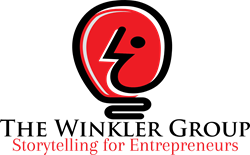
Ready to market smarter?
Get Instant Access to our Storytelling Library
0 notes
Text
Tell Your Stories in 3D
Story isn't spotless, clean, or perfect.
Authentic stories are often dirty.
It's conflict, obstacle, or mistake that actually causes listeners to lean in and pay attention to our stories.
But traditional marketing and PR have taught us to hide the ugliness.
Part of telling and living a compelling business narrative is to shed the disguise of perfection spinsters would rather sell. The problem is no one believes perfect stories. The skeptics know you aren't perfect. And attempting to hide what everyone knows inhibits the building of trust.
Business narratives that connect acknowledge imperfection and touch audiences on a human level. An emotional level. They acknowledge the problems, challenges, and adversity perfect stories do not.
I call it 3D Storytelling:
Dirty
Dark
Dire
Unless you're telling a 3D story, acknowledging and incorporating the bad, you're not likely to connect with those you wish to influence.
When you're helping individuals and organizations tell stories that connect as I do, these are attributes and qualities that must be injected into authentic stories.
Antagonism is a fact of life.
It allows you to reveal your true character in the face of adversity. It provides an opportunity to lead. And it enables you to overcome the odds publicly.
If you want people to listen to and believe your story:
Stop sanitizing story
Inject antagonism
Acknowledge mistake & obstacle
Teach others how you overcame
If you want people to root for you...
Give them something to root for.
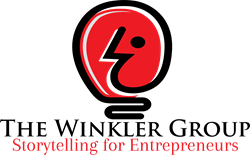
Ready to market smarter?
Get Instant Access to our Storytelling Library
0 notes
Quote
Do not go out on that show tonight knowing it's the last time...don't go out there and cry. Don't go out there and say you're sorry.
Ric Flair 3/26/2001
0 notes
Text
Why Everyone Needs a Storyteller in Chief
If converting a prospect into a customer is the goal...
Or, if creatively marketing a product or service is the task...
Or, if you're simply trying to find a way to convince the boss to let you do something you think will work...
Success belongs to those who connect, influence, & persuade. These outcomes become infinitely harder to accomplish for people who are selling, marketing, or asking for permission. If these are the activities in which you are engaged, your not as likely to engage the audience you wish to influence.
Engage people rather than processes.
To do this you have to tell compelling & authentic stories audiences not only believe in, but take an ownership stake in. When you create opportunities for an audience to help create the proof by which it is convinced, you are dramatically increasing the likelihood the audience will do as you wish.
The problem is the majority are not telling compelling stories.
They're too busy:
Giving speeches
Making presentations
Focusing on bullet points
However, storytellers are audience-centric. They have the empathy required to connect. And they understand what they must do to become a storyteller who connects:
Create irregularities to command attention
Connect emotionally & unite ideas and feelings
Acknowledge the negative
Tell on yourself & point out the antagonists
Respond courageously & resolve
Storytellers cut through the digital noise and connect by partnering with their audiences to create something from which each can benefit. They succeed where marketers, salespeople, and permission seekers fall short.
Steve Jobs wasn't just Apple's Chief Executive, he was the brand's Storyteller in Chief. Brands that create and tell winning narratives create a measurable return and bolster the the bottom line. The story is the difference between being a luxury good and a commodity item.
If an organization lacks a Storyteller in Chief, it's leaving money on the table and not marketing & selling as efficiently and effectively as it could be.
If you're not the Storyteller in Chief of your life, who is? And why would you, or any individual or organization, cede that powerful authority to anyone but yourself?

Ready to market smarter?
Get Instant Access to our Storytelling Library
0 notes
Text
Your "No" Radar & Why It Matters
"No" is the second best answer you can get from a prospect or client.
"No" can actually prevent value destruction by saving us:
Time
Money
Emotion
The problem with "no" is it is often not conveyed verbally. To realize all of the benefits of a "no" we must consciously hone our "No" Radar. We're all equipped with this tool- it's that feeling deep down in our guts that senses or perceives "no".
But the majority train themselves to ignore their "No" Radars. It's just easier to lie to ourselves.
But those who truly value the finite time they've been given to create what the muses funnel through them understand the importance of honing and allowing their "No" Radars to guide them...
...even when their hearts would rather ignore it.
The universal question of "why" is one that often cannot be answered with any real certainty.
Why don't they call back?
Why can't they just tell us "no"?
Why do they leave us hanging?
None of that is for us to decide though. And none of that is for us to answer. But on a macro-level we know people do not verbally tell us "no" for three reasons:
They are busy and "no" is unimportant (to them)
They're not sure what they want and have not provided a "no" in their mind
They're cowards and simply avoid the discomfort "no" often creates
Unreturned calls, unreturned email, and broken promises all show up on our radar. The fight you must fight after they pop up on your radar is to acknowledge them.
Like a blizzard on a weather radar, they can't be wished away.
When we embrace our "No" Radars we are honoring the dreams in our heart. The quicker we accept what we see on the radar the quicker we can get back to work. To creating, accomplishing, or undoing what He put us here to do.
We must teach ourselves to see our "No" Radars for what they are; gifts that for some reason another refused to give but one we can give to ourselves. Hone your "No" Radar by:
Recognize the fear/pain/embarrassment
Listen to what it means rather than ignoring it
Refuse the temptation to lie to yourself
Stop following up with the "no" provider
Flip the "no" into a "go"
When you see the "no" for what it is- the second best answer you can get- you position yourself to quickly "go" get what you deserve- a "yes" from someone who deserves your art.
"No" is second best because it:
Reduces uncertainty
Eliminates waste
Narrows our focus
Sometimes, actually often, a "no" will be silent.
Amazingly though, we can still hear a silent "no" if we listen honestly.
But not if we're too busy hoping.
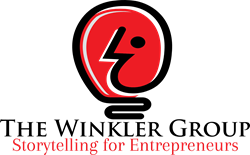
Ready to market smarter?
Get Instant Access to our Storytelling Library
0 notes
Text
If Walmart Stopped Advertising...
...would anyone really notice?
I mean besides the marketing executives, ad agencies, and television buyers who'd instantly become irrelevant?
Would Walmart, which just announced store traffic is down, see a further decline?
Top of mind arguments aside, do people see a Walmart commercial and say, "You know I was gonna hit up the Dollar store or Amazon but I think that commercial changed my mind.."?
Only by changing how people feel about their experience at Walmart will the store be able to win back customers who have occasionally stray at a dollar store or Amazon.
Sure Walmart could:
Create a pop-up dollar store within a store to win back dollar store customers
Create incentives that lure back Amazon shoppers by connecting online electronic purchases with a cause important to customers in a specific region
Or Walmart could actually do the hard work it takes to change how people feel about it and themselves when they shop there.
What if Walmart brought coffee, coupons, or childrens' toys to the people waiting at night in the parking lot at the end of the month for their benefit cards to be replenished?
Knowing your poorest customers struggle at month's end, what if Walmart allowed them a line of "food credit" so parents and their children might avoid this hardship?
What if Walmart, at least in densely populated urban centers, created a subscription & delivery service for the elderly, disabled, or shut-ins who lack the ability to physically get to Walmart to shop but not their laptops?
Or what if Walmart really differentiated itself, at least from Target, and announced that it was halting all advertising for one year (approximately $2 billion) and spending all of that money on IT infrastructure (Walmart spends more on advertising than IT) that would protect customers and their data better than any retailer in the world?
What if it did things like this that might change how people feel when they shop at Walmart? What if it stopped telling and started doing?
Would Walmart continue to lose store traffic?
Would it still be a commodity in the hearts of its customers?
0 notes
Text
Reverse Engineer Success
Try being successful backwards.
What I mean is envisioning the success you desire prior to ever beginning the project you intend to be successful.
Write down the success you envision. Be ultra-specific, shoot for the moon, and fight the urge to be conservative or humble.
Write the tease before the blog post
Write the review before the book
Write the testimonial before incorporating
Writing down desired outcomes forces you to commit more deeply. Making that commitment public further deepens the oath for those with the courage to do so.
Those who visualize success before being a success:
Clarify their objectives
Identify a strategy
Choose smarter tactics
You'll do better work when you know what success expects of your work. You'll create something that proves your vision correct. Or you'll know when what you've created is not measuring up.
Detailing the success you desire will act as a guide. One that will help direct, focus, and correct you when your project inevitably veers, changes, or morphs.
Doing so will also hold you accountable should you be tempted to cut corners, compensate, or quit.
To be a success you must first define success. You must know what success looks like ahead of time. Otherwise you cede authority and allow someone else the right to define your project as a success, failure, or incomplete.
Your success may ultimately require that you cede some of this authority.
However, no matter the outcome..
Applause..
Criticism..
Or silence..
You'll never truly know whether what you've created is successful unless you first tell yourself what a success it's going to be.
1 note
·
View note
Text
As Long as You Have an Excuse...
...you don't have to start.
Nor do you have to take responsibility, be vulnerable, or risk anything.
You'll always be able to find an excuse, even one that's legitimate, if you look hard enough.
The choice you have today is what to look for- an excuse or a way.
0 notes
Text
What Steve Jobs Knew About Storytelling You Don't
Since Apple CEO Steve Jobs died, financial analysts and journalists have written extensively in regard to what the company lost, is losing, or is on the verge of losing:
the ability to innovate
the ability to create the next big thing
the delicate blending of elegance & functionality
Speculative analysis such as this is what drives traffic to financial news web sites and provides institutional investors what they believe is an edge.
But this type of analysis is shortsighted and does not adequately explain what Apple lost when Jobs died.
Jobs' ability to connect emotionally and authentically with audiences is what propelled Apple to the top. People were purchasing the story attached to the product. A story that wrapped a product, originally invented by a competitor, in a type of emotional packaging that cultivated trust and loyalty.
If you're in business today you're in the business of storytelling whether you know it or not. It means everyone can learn something by studying how Jobs leveraged the power of storytelling to create value.
How did Jobs do it and how can we recreate it, or at least a portion of it, to help us achieve our objectives? Below are five secrets Steve Jobs used to tell authentic stories that connected, influenced, & persuaded. After each is a brief tutorial on how you can begin incorporating the secrets of storytelling to boost your business today.
5 Secrets to Great Storytelling
1. Feelings & Phones Jobs understood the need to create intimacy between people and Apple's products. If Jobs could create a circumstance in which a product would evoke an emotional response, he knew he'd know longer be in the business of selling products. Attach emotion to a product and you're no longer selling an iPhone- you're selling the feeling that comes with the phone. It's no longer a phone when you create an environment in which people perceive it as a connection tool- one that keeps those we care about close and accessible. One that allows us to explore, keeps us safe, and helps us navigate our day more efficiently. It's emotion that motivates and inspires people to camp out days in advance of the product going on sale, not the product itself.
How to Do this Yourself You must be willing to invest the time interviewing your customers or a competitor's customers you hope one day to convert. You're not after what they use the product or service for. You want to know why they use the product or service. Traditional surveys and focus groups will not likely provide the data you'll need to connect your product with an emotion that motivates. People are often not even aware or able to accurately tell you verbally why their really using a product or service. Instead, draw out the metaphors customers associate with using the product or service. Unwind the metaphors until you find the raw data you need to truly understand the customer, what motivates them, and the vulnerabilities the product or service helps alleviate.
2. A Punch in the Gut Jobs understood a compelling story needs a punch in the gut, a black eye, or a bloody nose. These are events that upset the apple cart. Ones that knock us off course, stacks the odds against us, or jeopardizes our chance to succeed. Reality doesn't discriminate. And those who rosily paint over it in effort to look spotless are only creating distance between them and their target audience. Life isn't always fair. Bad breaks happen. Things come against us. However, these are the events that provide the storyteller with an opportunity to draw closer and connect with an audience. Jobs leveraged several of these events: a) the company founder, wrongfully ousted, and returning in superhero-like fashion to save the company those who wronged him left for dead b) the cancer patient, who despite a bad hand, terrible odds, and unexplainable unfairness, courageously brushes it aside to set an example, lead, and overcome.
How to Do this Yourself You certainly don't need a punch in the gut like Jobs' endured to tell a compelling (ousted founder & cancer). What you will need is the courage to acknowledge life-altering events that jeopardize the original objective. Most try to hide punches to the gut. Most attempt to keep them from coming public. In fact, this is what public relations departments specialize in. However, presenting an overly promotional or rosy rendition of events is spin. Spin works to create distance between storytellers and audiences. Audiences simply don't buy that everything in your world is great. It's certainly not all great in their world. Those brave enough to go public with their punch in the gut will find audiences that can identify with the adversity. They'll see you differently. They'll see you as authentic.
3. What You're Made Of Jobs understood we don't often control a punch to the gut but we do control how we respond. A punch to the gut is simply an opportunity to show the world what we are made of. Jobs certainly showed us what he was made of. He may not have always been nice. He may not have always have been right. He may not have always been a nice boss to work for. But the way Jobs responded to a punch to the gut told us what words could not- that he was fighting to create something spectacular. And that he was fighting to create it for us. Jobs was certainly secretive, ultra-competitive, and a micro-manager for sure. However, he wore his response to the circumstances of life on his sleeve for all to see.
How to Do this Yourself The decision you must make when incorporating into a story your response to a punch in the gut, is how to illustrate the response. The actual responder is one choice. Third party advocates are another. You might also consider a hybrid approach. No matter the approach, this is an opportunity to lead. To show your audience how you respond when the chips are down. How you behave under pressure, in the face of adversity, or when the world doesn't give you a fair shake.
4. Welcome Your Enemies At least in the context of a story. Jobs was a master when it came to acknowledging competitors or enemies. He was even known to pick a public fight with an enemy when he believed a competitor was using less than optimal design, technology, or execution. He didn't ignore, run from, or hide from competitors. In fact, Jobs used competitors to show the world why he believed Apple and its products were superior. Even after a punch to the gut and responding bravely, Jobs saw value in acknowledging those trying to do him or Apple in.
How to Do this Yourself This is another place individuals and organizations often stumble in the storytelling process. Public relations departments often attempt to sanitize a story until its no longer believable to anyone but the storyteller. And that creates value for no one. Conventional wisdom says to ignore the antagonists. We're only giving them what they want if we pay attention to them, right? Wrong. Taking on those who wish to do you harm, derail your plans, or impede your progress resonates with audiences that often must overcome similar circumstances. Antagonists are an opportunity to show the world why your idea, product, or service is superior. Line up the antagonists so you can knock them down. Antagonists may be human competitors or critics but they might also take on other forms:
You vs. Technological limitations
You vs. Conventional design principles
You vs. Science
5. Our Story vs. My Story As Jobs wove the personal in and out of the facts of a story, he did so in a way that involved the audience.Jobs understood the best stories are transactional. They involve audiences who feel as if they own a portion of the story. When a storyteller creates an environment in which an audience feels it has a stake in the story, that audience is more likely to believe in and retell the story. Product announcements were presentations to Jobs. They were stories. It started with the invitations sent out to the media and other parties. The invitation was Jobs' way of asking permission for your attention. An audience that grants permission is much more receptive to the message. Jobs also used scarcity of space to persuade spectators a new product dazzled. The media herd was much too large and the display on which news products rested too small to allow for anything but a buzz-filled sprint to snap the first photograph- social proof the product was superior. Additionally, Jobs didn't preach, present, or lecture. He led his audience on a journey. A trip the audience had never been on. An exploration of something that didn't exist until its unveiling. Jobs led but he and his audience explored the new product together. It was a transactional process that caused audiences to lean in and participate.
How to Do this Yourself Ditch the crutches- the notes, scripts, & power points on which you lean for support. Create an experience with your story that offers the audience an opportunity to engage, explore, and add to the story. Allow and encourage audiences to fill gaps, blanks, and portions of the story others finish for the audience. Help the audience create the proof by which it is convinced.
"Oh, and there is one more thing..."
Surprise us with your story, your message, and how you deliver or don't deliver it.
To connect like Jobs, be authentic, courageous, and vulnerable. And do so regardless of whether anyone else is doing the same.

Ready to market smarter?
Get Instant Access to our Storytelling Library
0 notes
Text
How to Become a Hall of Fame Storyteller
I robbed Greg Maddux in the basement of Riverfront Stadium in 1998.
Maddux, who today was elected to the Major League Baseball Hall of Fame, won 355 games over a 23-year career and ranks eighth on the all-time win list.

Why would I accost one of the best ever?
Besides fame and fortune, Maddux had something I wanted.
After talking my way into the Atlanta Braves locker room, I located Maddux's stall but kept my distance for a bit.
Timing is important.
It was hours before Maddux was scheduled to pitch against the hometown Cincinnati Reds and I wanted to observe Maddux's pre-game preparation.
In reality though, I wasn't there to talk pitch location or ball movement- two of the skills that helped Maddux dominate in era measured more by radar guns than outcomes.
Maddux was also notorious for mental visualization. In other words, Maddux routinely envisioned himself performing successfully against the hitters to whom he would later pitch.
It was a mental exercise that allowed Maddux to see himself succeeding in difficult, high-pressure situations.
By the time Maddux actually found himself on the mound in one of those situations- it was old hat. He had already pictured himself succeeding in that scenario.
It's one reason Maddux was cool under pressure.
Unflappable.
Calm when other would panic.
The very same type of visualization helped steady my shaky hands as I finally made my approach.
There he was alone at his locker.
"Mr. Maddux?" I whispered.
"Hey!" he responded.
Maddux was kind with both his time and advice that day but that's not what's important for readers looking for an edge here.
What I learned when I mentally robbed Maddux in Cincinnati was that, like many of the greats in any endeavor, Maddux was a storyteller.
But he used more than words to tell.
Maddux saw himself, through mental visualization, as the protagonist executing a winning story.
The story he told himself also included what many leave out: antagonists.
Maddux often pictured himself locating pitches against hitters who had been successful against him in the past.
He intentionally sought out moments of stress, conflict, and pressure.
These are environments from which most shy away.
Instead, Maddux sought out these situations, pictured himself as a success, and ultimately executed the story he told himself on the mound.
It's a type of preparation anyone competing for something can adapt or replicate:
Reverse engineer success
Start by telling yourself a story that'll achieve it
Insert yourself as the protagonist
Upset your comfortable state of balance
Do so by including antagonists in your story
Increasingly add more stress, pressure, & anxiety
Routinely envision yourself restoring balance & achieving your objective
The day I mentally robbed Greg Maddux in Cincinnati I hoped I might come away with the secret to throwing his cut fastball.
Instead, I came away with something much more valuable.
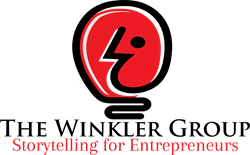
Ready to market smarter?
�� Get Instant Access to our Storytelling Library
0 notes
Text
How Storytelling Trumps Crises
It's the most gruesome injury the sport has seen.
Silva is finished.
Anderson has fought his last fight.
As soon as Anderson Silva, a mixed martial artist and former UFC champion, shattered his tibia and fibula when a leg kick he attempted was checked in a recent fight, the pundits, journalists, and analysts noted definitively Silva's career in the octagon was over.

Seemingly, it's an unfair fight- the media world vs. Silva.
"When can I train?".
Those four words, Silva asked them of his doctor just before surgery, flipped the prevailing narrative on its head- the one that began pronouncing Silva's career as over immediately after the injury.
Silva, who holds the longest title defense win streak in UFC history, upended the story being told by bloggers, broadcast analysts, and fellow fighters. As the rest of the world contemplated a UFC without Silva, Silva was asking when he might be able to train for his next fight.
Four words vs the world.
The narrative quickly shifted after the world understood that despite the agony that accompanies such an injury, Silva was already plotting a return even before his surgeon had inserted a metal rod in his left leg.
Four simple words had changed the narrative. Suddenly, MMA writers were penning stories about how other athletes who had suffered similar injuries had made comebacks themselves.
Stories began to appear about how Silva's leg might hold up were he to attempt a similar kick in a future match. The debate shifted from a career that was over to a debate over how long it might take Silva to recover. Others even began speculating on whom Silva may fight upon his return.
How did Silva accomplish all this with just four words?
First, it's important to understand what Silva did NOT do:
Complain about the coverage
Argue with the analysts, pundits, or reporters
Attempt to correct errors in the prevailing narrative
These are mistakes public relations professionals routinely make. They're blinded by the prevailing narrative and inadvertently supplement, extend, or fuel it by engaging in the three tactics Silva avoided.
Silva did not personalize the narrative. In fact, he created a silent distance between the prevailing narrative and his reality. Rather than address the prevailing narrative in a reactionary manner- he created his own.
Silva told a story that was distinct, unique, and proactive.
He told a completely different story that, not only refuted the prevailing narrative without ever directly addressing it, but also prompted the world to lean in and take partial ownership of.
This is how Silva used story to trump crisis:
He surprised us by violating our expectations of a man on an operating room table
He used our assumptions against us by forcing us to look toward the future and not directly acknowledging the prevailing narrative
He connected emotionally by prompting the audience to wonder with him when he might be able to train rather than if
By including the audience in the composition of the story Silva helped the audience create the proof by which it was convinced
Silva made his audience care.
He did what marketers, PR professionals, and digital brand managers often fail to comprehend in the heat of the moment.
It wasn't spin, technology, or an expensive outside firm on which Silva relied to flip the prevailing narrative and crisis.
It was authentic storytelling.
Silva shattered his leg...
And then the prevailing narrative that said he was done.
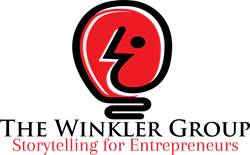
Ready to market smarter?
Get Instant Access to our Storytelling Library
0 notes
Text
New Day's Resolution
It'll be another 363 days before many of us make another New Year's resolution.
That's a shame and actually makes us less accountable.
The confetti, celebration, & party-like atmosphere surrounding resolutions appear to reaffirm once a year goal setting is proper.
It's not though.
Resolutions, at their core, are simply stories we tell ourselves in regard to the future we want to create. These stories include goals, objectives, or results we aim to achieve.
But by setting an overarching goal just one time a year we are cheating ourselves. We are ignoring reality and actually creating the potential for limiting personal growth in one of two ways:
Never achieve our goal for the year
Achieve our goal too early and plateau afterward
Understand, effective objectives must be:
Ultra-specific
Time specific
Measurable
But they must also be flexible.
When the facts change, or you slip, or you find yourself ahead of schedule- it's important to adjust the story you tell yourself- your resolution.
Should you fall behind in achieving your resolution:
Set a new goal based on the current situation
Identify key parts of the resolution that are still obtainable
Add or subtract from the original resolution
When you make adjustments, sometimes daily, it means you understand success doesn't generally come in heaping chunks. It comes little by little- a client at a time. It's why "overnight successes" often bristle when labeled as such. They know the truth- that it was a long hard slog defined by persistence and grit rather than a single hail mary.
Managing your resolutions in real time allows you to continually calibrate your goals with reality.
Likewise, it's just as vital that you not allow your resolutions to remain rigid when it appears as if you're well ahead of schedule in regard to achieving your objective.
If you're set to successfully complete your resolutions by September what will you do the rest of the year- kick back and coast? Doing so is just as inefficient as deeming yourself a failure as soon as you know you won't make your resolution in the allotted 365 days.
Should you wind up achieving your resolution before year's end:
Determine if the goal you set was sufficiently challenging
Identify any shortcuts you took
Raise the standards you set
Add to the resolution or find a way to over deliver
Managing a New Year's resolution is not intelligently done once a year. For a resolution to create enduring benefits one must routinely adjust, change course, stretch, reduce, flip, or even start over in regard to their resolution.
If not you're doing a disservice to yourself, the dream you're trying to realize, and the clients you have or one day hope to attract.
Very seldom are organizational projections, forward looking statements, or guidance spot on. It's why these items are routinely massaged throughout the year.
A New Day's resolution seems more appropriate.
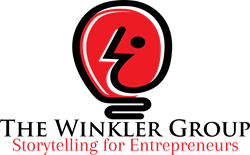
Ready to market smarter?
Get Instant Access to our Storytelling Library
0 notes
Text
What Garth Brooks Can Teach You About Marketing
Garth Brooks is dusting off his guitar and unretiring again.
He's currently designing a 2014 World Tour packed with new technology that'll likely change the concert experience as we know it and add to the 68-million records he has sold since 1991 (more than The Beatles).

Brooks is a master storyteller.
Not only does he weave story throughout the songs he writes, but the entire concert experience is a narrative Brooks partners with his audience to create.
It's why each concert is unique to the audience even if the songs he sings are not.
So what's the secret? How can entrepreneurs set the bar and then raise it just as Brooks does with his concerts? It all boils down to empathetically partnering with your target to create a compelling story that surprises and connects emotionally.
Here are 5 ways Garth Brooks does it that'll work for entrepreneurs as well:
Audience First- identify who you're aiming to delight. Learn all you can about them: where they go, how the prefer to communicate, what they believe, what you can offer them no one else can, and the story they live. Only after you understand their story can you determine how yours may be positioned to advance theirs.
Practice Empathy- prior to an arena concert Brooks works his way to the top and sits in one of the worst seats in the house. He imagines how the concert-goer who'll sit in the seat hours later will consume the concert. Brooks observes the stage, the lighting, and the big screens from the concert-goer's point of view. He experiences the challenges they'll encounter being so far from the stage and identifies ways to remedy the challenges. His goal is to move the show closer to the individual. By feeling what the concert-goer in the worst seat in the house feels, Brooks finds little ways to make that person feel as if they are the most important in the crowd.
Create an Experience- it's not a concert Brooks puts on, it's an experience. Experiences do not have traditional beginnings, middles, and ends. They meander, wind, and violate expectations. Concert-goers often expect 90-minutes of music straight from the artist's albums. Brooks delivers much more- a concert that is sandwiched in between a beginning that starts prior to the first note being played and multiple endings (encores). The concert is only a portion of the experience.
Surprise- we're wired to notice irregularities. The abnormal commands our attention. Brooks routinely pokes the status quo and, in doing so, effectively grabs an audience by its shirt collar and forces it to pay close attention. He sprinkles the surprises throughout the show. For instance, he might begin singing prior to appearing on stage prompting people to lean in and look around for him. He may rise from beneath the stage, surprise the audience from behind by being a member of the crowd, or take flight and swing from the rafters later on. Brooks enters, exits, and positions himself exactly where you'd least expect.
Partner to Tell Your Story- enable your audience to help create the proof by which it is convinced. A Brooks concert is an interactive affair. He's just one performer, albeit the most important, of the tens of thousands of performers at the concert. Brooks connects emotionally with his audiences by relying on them to help with the concert. Without audience participation a Brooks concert would feel incomplete. He finds moments where the audience can participate in creating the experience they're enjoying. The audience might be asked to sing a chorus, participate in the creation of a music video, or support an unrelated cause in some manner. Creating opportunities for your audience to participate in the story being told makes members feel ultra-important, special, and responsible. It creates a sense of ownership. Brooks relies on his audience just as they rely on him. That's a bond more valuable than gold.
Brooks has said he doesn't have the greatest voice..
Nor is he the world's greatest guitar player.
In the end though none of that seemed to matter
These storytelling strategies are part of the reason Brooks sells more records, memorabilia, and concert tickets than his competitors.
If they're good enough for Garth...

Ready to market smarter?
Get Instant Access to our Storytelling Library
3 notes
·
View notes
Text
What Entrepreneurs Can Learn from Hunters
When the inevitable happens at your organization...
When you spill, slip up, or make a mistake...
Your first reaction will likely be to hide, minimize, or spin. The problem is none of these options accomplish what's most important after a crisis- rebuilding trust.
Instead of marketing or engaging in public relations when the world rolls up hot at the worst imaginable moment...
The first decision you have to make in the midst of a crisis is whether you want to be the hunter or the hunted.
While the smart choice is obvious, something happens during a crisis that fogs our ration. When ration is traded for the status quo we damage our brands, reputations, and ultimately our fiscal health.
Instead of being the hunter we choose to become the hunted.
We lie low. We try to stay out of site. When a member of the media finds us we play word games, obfuscate, or fog the message. With our ration gone, we make matters worse for ourselves; we increase the duration of the crisis, the costs associated with it, and the lag in rebuilding trust.
Smart people do this. They fall back on convention. On what they've seen others do. The world is out to get them and thus does not deserve the truth or transparency that would normally guide the organization's behavior.
Right when we as storytellers need to be at our best, we stop telling compelling stories altogether. We toss our finely tuned narratives out the window and make it up as we make it worse.
We become the hunted.
We let our fear of first overcome us and we trade our hunter's mentality for the ambiguity, doubt, and paralysis that eventually turns the hunted into someone's dinner, trophy, or waste.
A crisis doesn't mean we are no longer allowed to be hunters. Rather, a crisis should be the stimulus that immediately reminds us we are hunters- that we are the one's determining our messaging fates instead of a third party who might not have our interest at heart.
An entrepreneur facing a crisis must immediately be first to:
Announce the crisis- establish yourself as the primary narrator. Hunt the media, break the news yourself, and invite outsiders in to learn more.
Establish the initial set of facts- provide pictures, video, and items from the scene of the crisis that the media may use as props. Allow them to talk with your first responders. Hunt access the media would not have on its own and provide it to those covering the matter.
Hunters are constantly on the prowl for ways to surprise with candor, compliment with gratitude, and reinforce their reputations with courage. Most importantly, hunters do not allow a crisis to steal the storyteller in them.
Crises are opportunities for storyteller's to shine:
Establish yourself as the protagonist
Establish yourself as a trusted confidant
Establish yourself as an overcomer
How does an entrepreneur do this?
Like she always has.
Compelling stories told during crises are simply extensions of the stories you told prior to the crisis. This is exactly the point where many trade their hunter's mentality for one that's pervasive among the hunted.
If you're not already engaged in authentic storytelling that is consistent with your strategy and behavior, you cannot expect to achieve what I outlined above. You can't simply turn on the storytelling spigot if you're not a storyteller. Those who try soon realize the story well is dry- that's when they turn tail and become the hunted.
The story you tell prior to a crisis will provide a foundation on which you can build when your reputation needs it most. You can start today by:
Identifying an irregularity that commands attention
Violating the target's expectations
Acknowledging antagonists, mistakes, and stumbles
Conquer only after you partner with your audience
Enable the audience create the proof by which it's convinced
Celebrate, commiserate, and move forward together
When you routinely engage in this type of storytelling when it is not required of you..
It'll be there to build on when you do.

Ready to market smarter?
Get Instant Access to our Storytelling Library
0 notes
Quote
We speak, on average, 16,000 words a day. But how many do we actively listen to?
The Winkler Group
0 notes